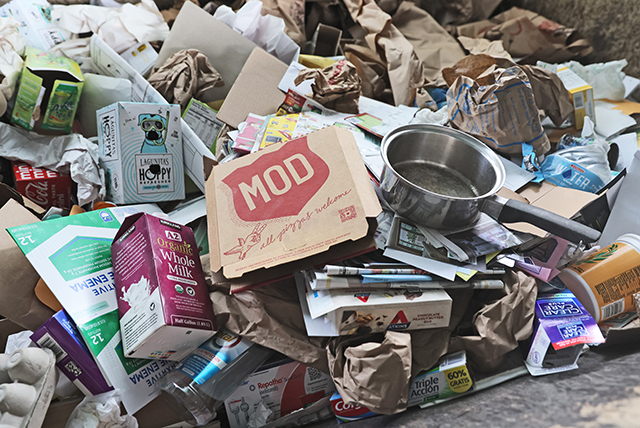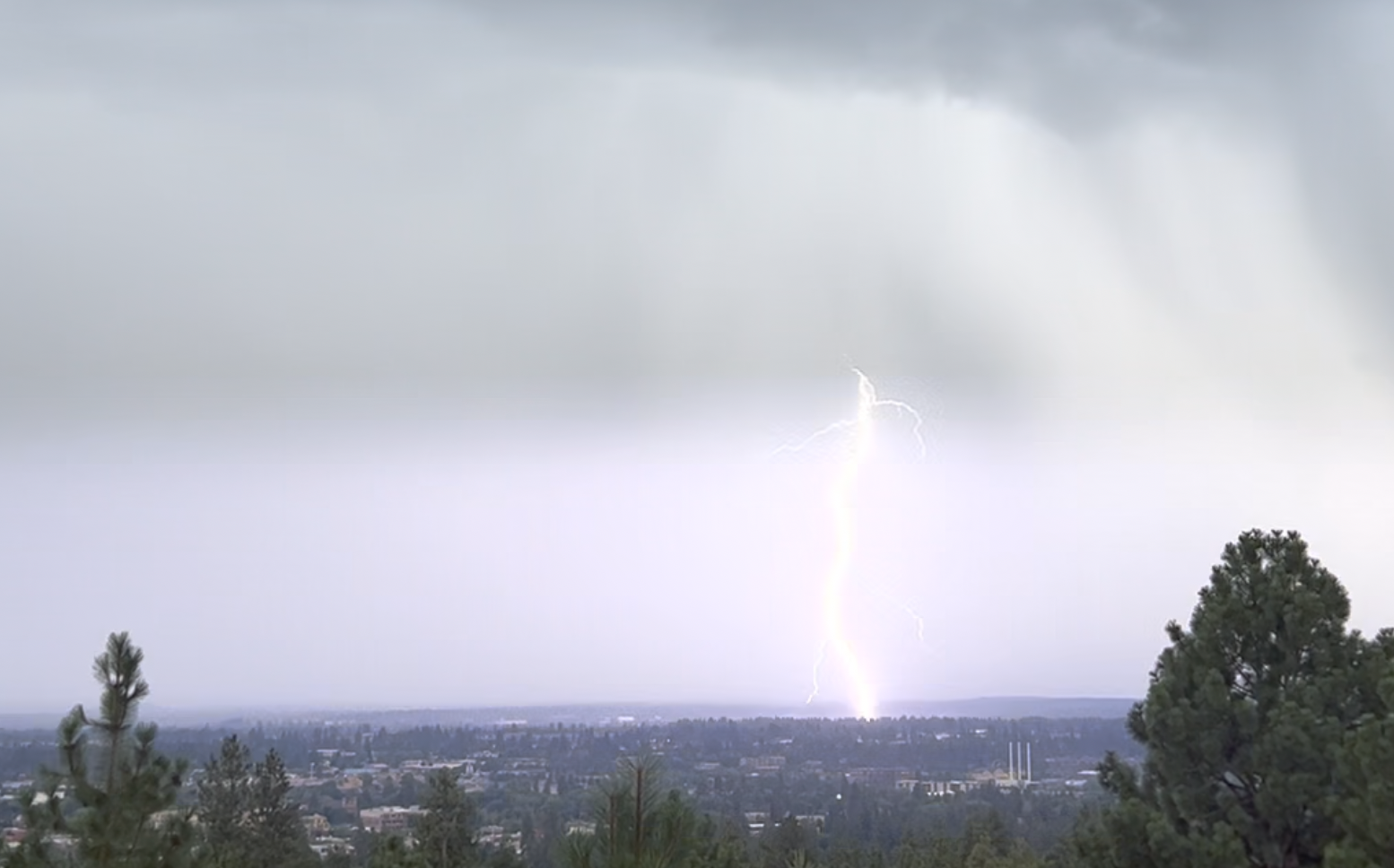Embracing the challenge of perfect phyllo
Published 11:39 am Tuesday, May 23, 2017

- Squares of baklava, the simple dessert of phyllo pastry, nuts and syrup or honey, in New York, April 28, 2017. Making perfect, paper-thin phyllo can take years of practice: Fortunately for home cooks there is plenty of ready-made phyllo available. Brands do vary, though, so make sure that what you start with is of good quality. (Andrew Scrivani/The New York Times)
You think you’re pretty good at something until you meet someone who has been doing it for 41 years. Such was my experience, at least, with the apparently simple act of rolling out pastry very, very thin.
My first steps into the world of food were, as I’ve written here before, as a pastry chef. And even when I focused on the savory side of things, the fact that I’d cut my teeth in the pastry kitchen had instilled a base-level confidence. Later, when I often used commercial strudel pastry and phyllo rather than making my own, I thought the process was like riding a bike: Once you’ve learned, you never forget.
Trending
Or do you? Throughout some mishaps helping chefs in the Mediterranean, I found out otherwise.
The first is from Le Saf Saf, a restaurant in the coastal town of La Marsa, near Tunis, that was home to a friendly camel and was known for its brik parcels. Here, tissue-paper-thin warka pastry — like phyllo but a bit more robust — was filled with harissa, egg and tuna before being quickly folded and fried. The result was so crisp and thin you could see the egg through the skin.
After a few failed attempts to fold the pastry without creating a hole, I just pretended that there wasn’t one and continued on. The result looked more like a shriveled roll than the perfectly flat calzone I was aiming for. I patted the camel goodbye and went on my way.
Snapshot No. 2 comes from Istanbul, where a national love of sweets tips into obsession when it comes to baklava, the simple dessert of phyllo pastry, nuts and syrup or honey. I visited one of the city’s most celebrated baklava factories, Karakoy Gulluoglu, where production of the pastry is elevated to an art form.
The master baker, Mustafa, is a fifth-generation baker. After a team prayer and cheer, balls of dough were rolled and stretched again and again at a remarkable pace. They became thin enough to see through and so much like a billowy bedsheet that they could be flapped up in the air as if a bed were indeed being made.
What followed was nothing short of comedy as I got lost in the clouds of flour resulting from my trying to “help” and to roll out the pastry at a pace that would keep it from drying out.
Trending
In the third and final snapshot, I’m in Marrakech, trying my hand at warka sheets, used throughout Morocco in all sorts of savory and sweet stuffed parcels: an egg-filled brik like the one I’d had at Le Saf Saf, cheese- or meat-packed triangles, cinnamon and nut-filled “cigars.”
To stay with the cycling analogy: It’s one thing to be overtaken by someone who has been pedaling for many years. It’s quite another to be whizzed past by someone who looks barely old enough to own a bike. I was told this pastry maker was 15, but to me he didn’t look a day over 9. He flipped and swirled his pastry with the sort of blind confidence I could only (and will only ever) dream of.
I’d like to reassure you that, compared with the experts, we’re all on training wheels when it comes to making thin laminated pastry.
Don’t be scared. Take delight in the fact that it isn’t necessary for home cooks to make their own. There is enough good ready-made phyllo available. Brands do vary, though, so make sure that what you start with is of good quality.
Scrunch a sheet in one hand: If it’s brittle and falls apart, it won’t be a dream to work with. If it springs open, the quality is excellent. From there, just be liberal with the melted butter and work quickly when brushing the sheets to prevent their drying out.
Walnut, Cinnamon and Halloumi Baklava
Makes 9 large or 16 small pieces, takes about 45 minutes
For the filling:
2 TBS unsalted butter, melted
11/2 C walnut halves, roasted and finely chopped into 1/8-inch pieces
3/4 tsp ground cinnamon
3/4 tsp freshly grated nutmeg
1 TBS plus 1 tsp granulated or superfine sugar (caster sugar)
Finely grated zest of 1 lemon (about 1 tsp)
For the pastry sheets:
16 sheets of 9-by-9-inch phyllo pastry (phyllo sheets come in different sizes, so just cut them down accordingly)
5 TBS unsalted butter, melted
11/2 scant C coarsely grated halloumi cheese
For the rose water syrup:
3/4 C granulated or superfine sugar (caster sugar)
2 TBS lemon juice
11/2 TBS rose water
1 tsp dried rose petals, to garnish
Heat oven to 450 degrees Fahrenheit. Mix together all the ingredients for the filling and set aside.
Place one sheet of pastry in an 8-by-8-inch baking pan, preferably one with low edges, arranging the pastry so the sides of the sheet rise up the sides of the pan. Brush with a little butter and continue in the same way with 7 more sheets of pastry, brushing each with butter, until you have layered 8 sheets of pastry.
Scatter the grated halloumi on top of the pastry and then sprinkle all of the walnut mixture over evenly. Place another layer of pastry on top, pressing down securely. Brush with more butter and continue with the remaining 7 layers of pastry in the same way. Brush the final layer with butter and use your fingers to gently tuck the pastry edges underneath the baklava so you get a neat edge (a bit like making a bed).
Using a small sharp knife, cut the baklava into 9 or 16 pieces, allowing the knife almost to reach the bottom, but not quite. Transfer to oven and bake for 18 minutes, turning the pan around halfway through baking until baklava is dark golden-brown and crisp on top.
While the baklava is baking, make the rose water syrup: Heat sugar and 1⁄3 cup water in a small saucepan on a medium-high heat for 2 to 3 minutes, swirling every once in a while until the sugar has dissolved and started to boil. Reduce the heat to medium-low. Add lemon juice and rose water and let simmer gently for 6 to 7 minutes, until you have about 3/4 cup of slightly thickened syrup left. Remove from the heat and set aside.
As soon as the baklava has been removed from the oven, pour two-thirds of the syrup over it and sprinkle with rose petals, crushing them slightly as you go. Set aside for 5 minutes to cool slightly, and then serve each slice warm, with an extra 1 or 2 teaspoons of syrup drizzled on top.








